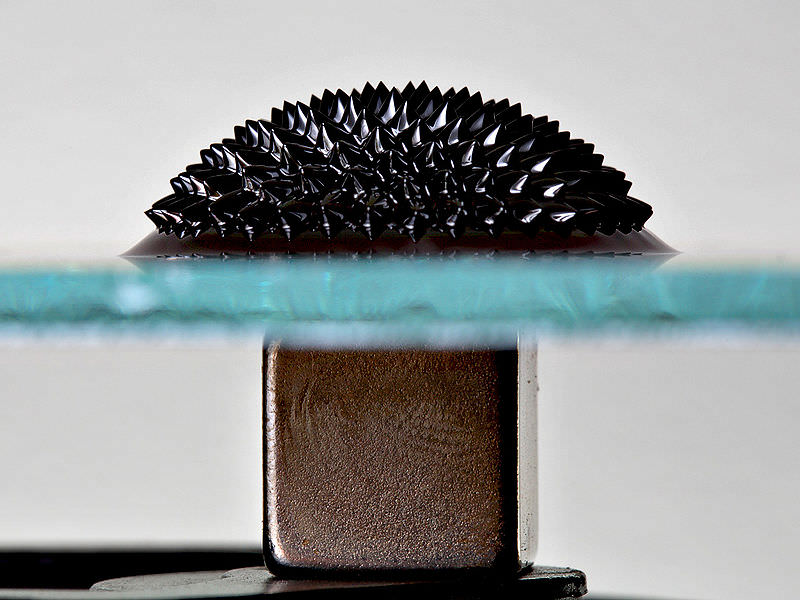[/caption]
A permanent magnet is a magnet that does not lose its magnet field. However what makes a magnet permanent? In order to understand this we need to know how magnets work. Magnetism is an aspect of the phenomenon known as the electromagnetic force a fundamental force of the physical universe. Magnetism like its other aspect electricity manifests itself as a field. What makes a magnet is when certain substances and elements are induced with a strong magnetic field. In the case of permanent magnets this field remains over time without weakening.
A permanent magnet is a magnet because of the orientation of its domains. Domains are the small magnetic field inherent in the crystalline structure of ferromagnetic materials. Ferromagnetic materials are the only substances capable of being made into magnets they are normally iron, nickel, or alloys that are made or rare-earth metals. A magnet is created when certain condition cause separate domains in a ferromagnetic item to be all aligned in the same direction. However the method used in most cases weak magnets can only be made. This is normally by direct contact with a naturally magnetic material or by running an electric current through it. However in the case of a field produced by rubbing it against a strong magnet is too weak and will fade over time as the domains return to their original positions.
The main way that permanent magnets are created is by heating a ferromagnetic material to a key high temperature. The temperature is specific to each kind of metal but it has the effect of aligning and “fixing” the domains of the magnet in a permanent position. It is conjectured that this same process inside the Earth is what creates natural permanent magnets.
Permanent magnets are important for their industrial uses especially when it comes to power generation and electric motors. The induction process for turbines and generators needs permanent magnets to turn mechanical motion into energy. They are also important for electric motors in many electronics using the reverse of the induction of electric current to make mechanical energy. As you can see without the permanent magnet we would not be able to take full advantage of the capabilities of electricity in modern devices.
We have written many articles about permanent magnets for Universe Today. Here’s an article about bar magnets, and here’s an article about super magnets.
If you’d like more info on permanent magnets, check out these articles from Hyperphysics and Practical Physics.
We’ve also recorded an entire episode of Astronomy Cast all about Magnetism. Listen here, Episode 42: Magnetism Everywhere.
References:
Hyperphysics
How Magnets Work

